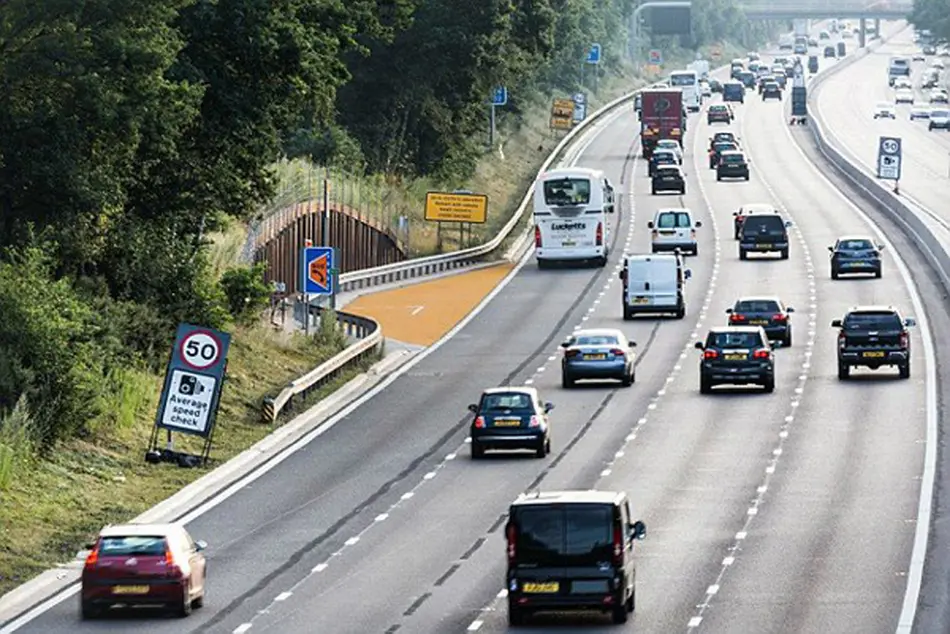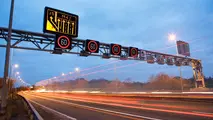Highways England continues trial of improved smart motorway emergency areas

Highways England (HE) is continuing the roll-out of its new style highly-visible smart motorway emergency areas, where drivers can stop if experiencing problems, with additional zones being trialed on the M25 and M1.
The new look emergency areas have bright orange road surfaces to help improve visibility so they are more obvious to drivers on smart motorways. The first of the new emergency areas went live on the M3 near Camberley in Surrey last month, and the change is part of a review into the design and spacing of emergency locations on HE’s smart motorway network. The first orange emergency area on the M25 is on the anti-clockwise side, between junctions 25 and 24. The remaining 22 emergency areas on the M25 will have the distinctive orange color added between junctions 23 to 27, and junctions 5 and 7, if the trial is successful. A further 14 emergency areas will have the orange color added along the M1 between junctions 19 to 16 from this month.
“We believe that changes such as these will help drivers have confidence when using smart motorways, and be clear about where they can stop in an emergency,” explained HE’s chief executive, Jim O’Sullivan. “That is why we are trialing these highly-visible new style emergency areas. The bright orange coloring will make them as easy as possible to spot, and should also discourage drivers from using them in non-emergency situations.”
HE is also carrying out a series of improvements that could save more than 700 tonnes of carbon a year. In a national first, the agency’s contractors worked with specialists to adapt technology used for architectural lighting for use on motorways and major A roads. The improvement work took place on the M62 and M621 motorways, replacing 1,618 sodium street lights with modern efficient LED lighting units. The new lighting is 53% more efficient, saving the equivalent energy of powering 20,000 homes. The project also included upgrading street lighting power supply equipment on both roads, and the installation of a remote monitoring and control system. The newly-installed LED lights require no routine maintenance, meaning less disruption for drivers.
HE’s service delivery team leader for Yorkshire and Humber, Mark Ramsden, said, “This is a true example of taking innovation from another industry, modifying it for the highways sector, and improving value by locking in safety, customer, cost efficiencies and environment benefits. We have replaced the conventional units with the newly-developed lighting to provide bright, effective illumination to highways and road signs.”



